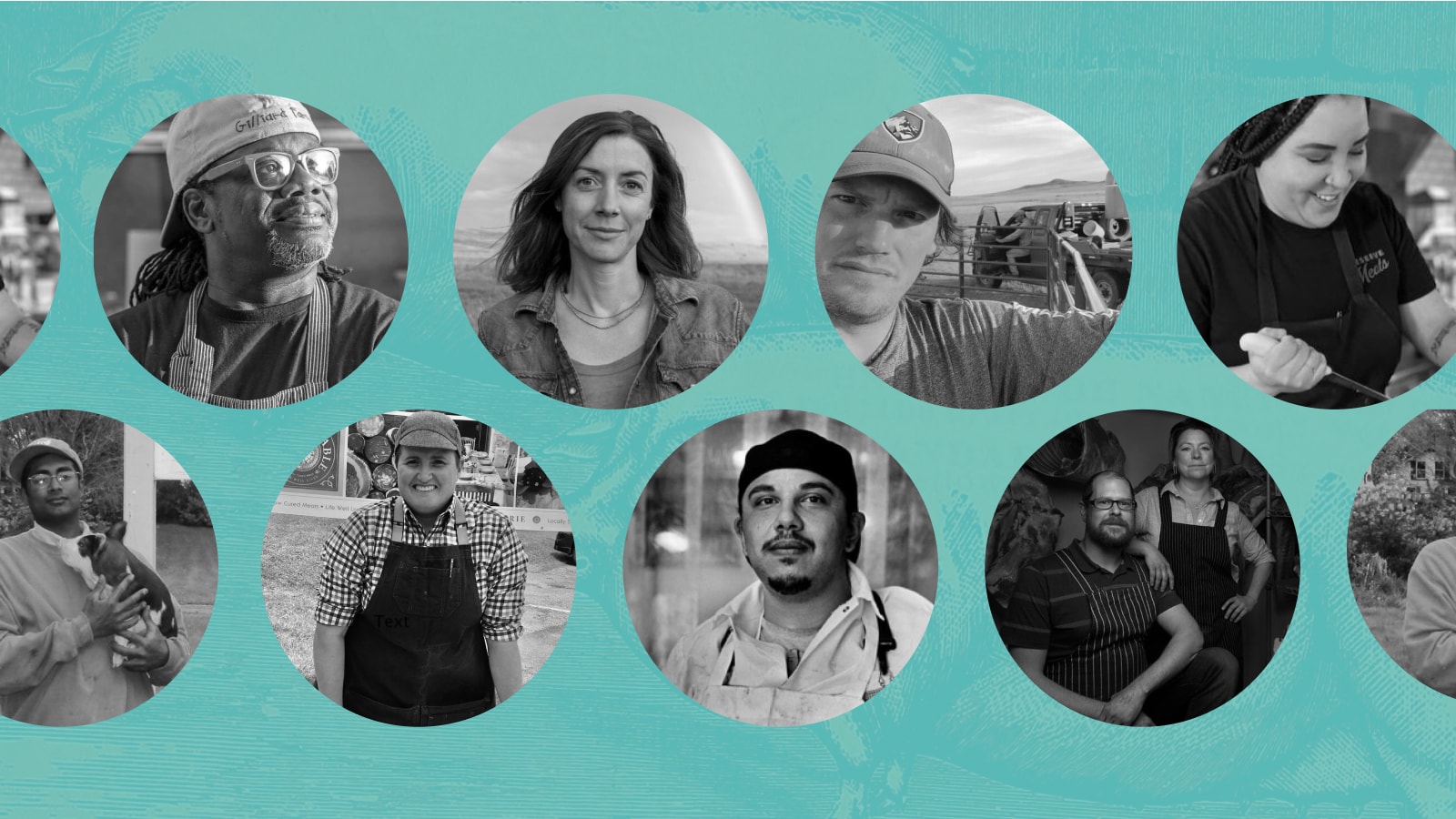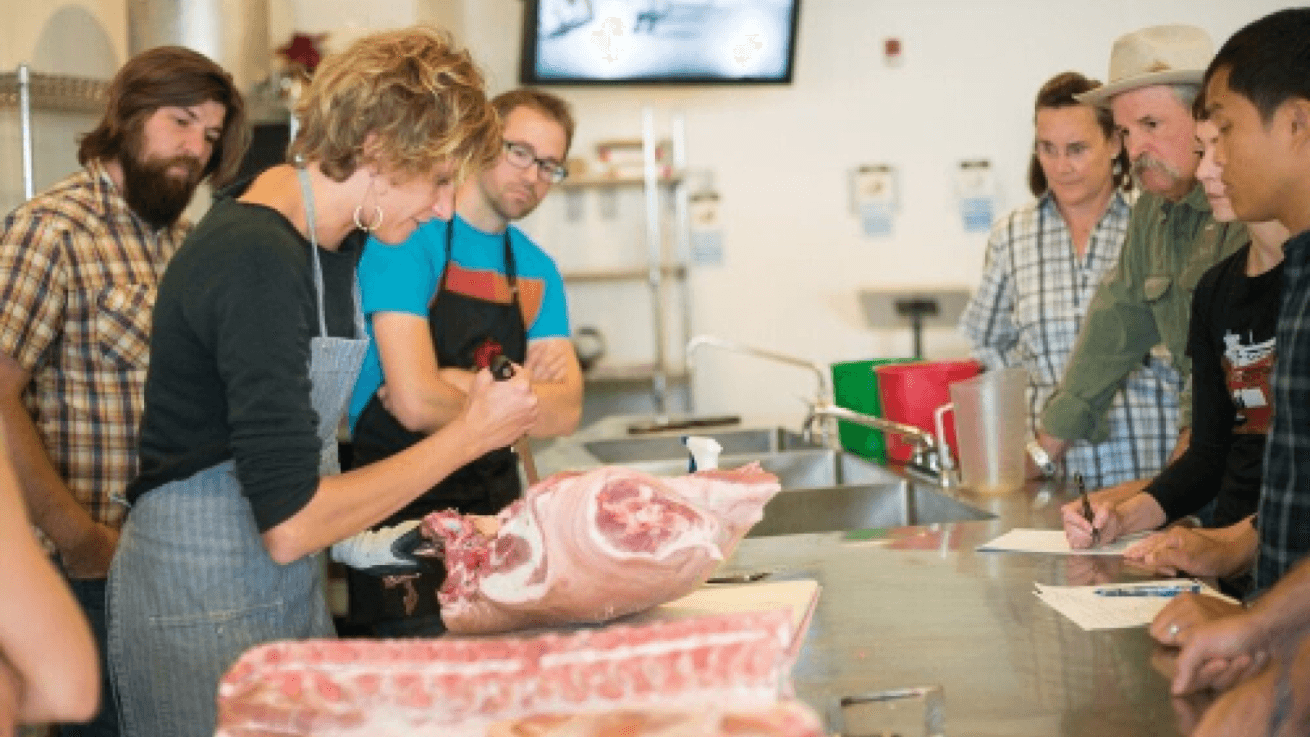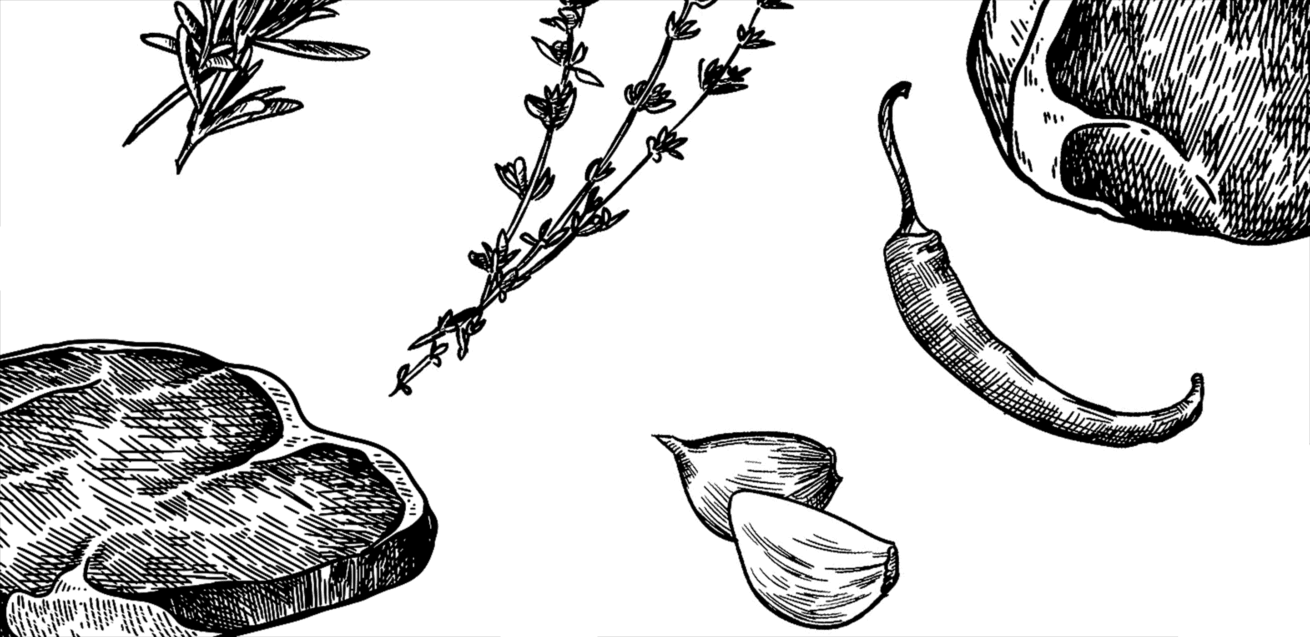Good Meat BreakdownGood Meat® Snapshots
Camas Davis


Camas Davis is a trained butcher, educator, and author. She is also the founder and former Executive Director of the Good Meat Project.
She is the founder of the Portland Meat Collective, which, from 2009 to 2019, brought hands-on, experiential meat education to consumers, producers and culinary professionals. She is also the author of Killing It: An Education. Originally from Alvadore, Oregon, she now lives in Portland, Oregon.
Why did you become a Good Meat® eater?
I grew up eating meat that came from animals my Dad and Grandpa hunted in the wilds of Oregon, as well as whatever meat my parents brought home from the grocery store. It never occurred to me, until I was older, how different these meats were. I became a vegetarian in high school, out of a vague sense that the meat we ate from the grocery store wasn’t raised responsibly, and, to be honest, because the kids around me were doing it. By college, I reverted back to being an omnivore. It wasn’t until I was an adult, working as a journalist and editor, that I got back to thinking about meat. I wrote a story about a cut of beef (bavette) I had eaten at a steakhouse and the story forced me to reckon with just how little I knew about where the meat I ate came from. I started learning that there were responsible ways to produce and eat meat and my thirst for more learning was ignited. In 2009, I went to France to learn about all the nuances, studying butchery and charcuterie with a family of pig farmers and butchers who set me down the path of defining for myself what “good meat” was for me.
How do you define your Good Meat® values?
Buying and eating meat means that I am an active change agent (armed with a lot of questions) in my food system. Demanding transparency from start to finish is key for me. I should be able to ask anyone along the supply chain, from the farmer to the butcher, how and where the animals were raised. My questions are always evolving. For a long time, I mostly asked about the quality of the animal’s life and the quality of their death. As I learned about holistic management and regenerative agriculture, I began asking about soil and biodiversity. It also began to feel important to me to ask bigger questions, like what is the true cost of producing meat that aligns with my values and why? Is this scaleable and how can it be more accessible? And, how can we change our economic and social systems such that these standards are the norm for everyone, because simply producing, selling, or buying meat is not enough. So much has to change about the world we live in in order for Good Meat® universe to be accessible for everyone. Lastly, I believe eating the whole animal is part of the equation and I have committed myself to eating every part of the animal for about 10 years now.
Where do you buy most of your meat?
I buy a whole pig, a quarter beef, an occasional whole lamb, and an assortment of whole chickens or ducks directly from local farmers in Oregon to fill our freezer each year. Sometimes I do my own butchery and wrap the meat myself. Sometimes I pay a butcher to do it for me. Sometimes I make my own sausage and charcuterie, as well. We sometimes supplement with meat from local grocery stores, butcher shops, or farmers markets, who source meat from farmers I have already vetted.
What meat, or meat dish, do you eat most regularly and what do you eat for a special occasion?
Since we commit to buying whole, half, or quarter animals, we really eat every cut. So we don’t have a regular cut or dish that we eat. That said, we do eat a lot of sausage and bacon. We also make a lot of larb, a really easy Thai dish that uses ground pork, beef, or chicken. We make a lot of braised or roasted meats that we use for tacos or bibimbap or other rice or noodle bowls or on salads, throughout the week. For special occasions I like to make “kitchen charcuterie” like duck confit, duck rillette, chicken/duck/rabbit liver mousse, bresaola, and rabbit porchetta.
What is your biggest challenge or obstacle when it comes to being a Good Meat® eater?
Cost has always been a challenge. My husband and I have variable incomes because we run our own businesses. Although we feel that buying meat in bulk is the most affordable way to purchase meat, some years we can’t afford it as much as other years. When that happens, we employ cooking and charcuterie practices that make the meat we buy last longer because the flavor is concentrated and we don’t need to eat as much to feel sated. Or, we simply eat less of it. We recognize that the farmers we buy from are usually charging for the true cost of producing that meat (sometimes they clearly aren’t covering their true costs and are charging too little). We support them whenever we can. But that brings up a bigger, related challenge: our entire economic and social system. Our family sees food as medicine and we prioritize food costs for sure, but the cost of healthcare and childcare are always competing with our food costs. This is a problem for so many Americans—the cost of good, healthy food, along with all the other necessities of life keeps rising, but our incomes don’t. It can feel like a competition and food doesn’t always win. It’s a complex puzzle. All facets of our society need solving. Changing our food system must happen within the context of changing just about everything else, from our economic system to our social and educational systems to how we live in our communities. It’s complicated.
Good Meat® Snapshots
Popular Links

Transparency in meat, from pasture to plate.
Practical tools and a national directory to help you choose—and champion—ethical and responsible meat.